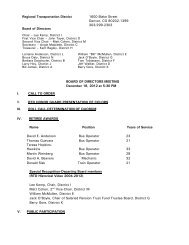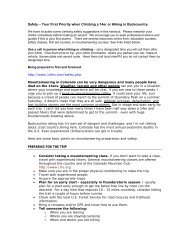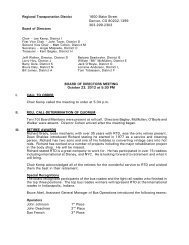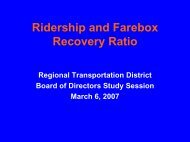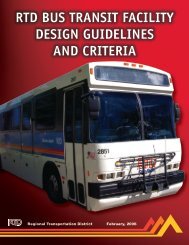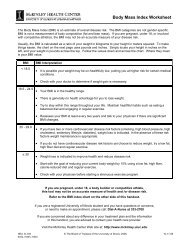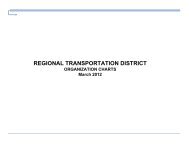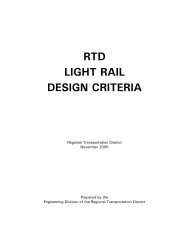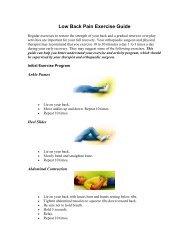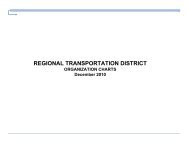Commuter Rail AC Electrification Load-Flow Simulation Report - RTD
Commuter Rail AC Electrification Load-Flow Simulation Report - RTD
Commuter Rail AC Electrification Load-Flow Simulation Report - RTD
Create successful ePaper yourself
Turn your PDF publications into a flip-book with our unique Google optimized e-Paper software.
<strong>Commuter</strong> <strong>Rail</strong> <strong>AC</strong> <strong>Electrification</strong> <strong>Load</strong>-<strong>Flow</strong> <strong>Simulation</strong> <strong>Report</strong> Revision 1<br />
3.2.5 Medium Voltage Switchgear/Circuit Breakers<br />
Each traction power substation includes a lineup of <strong>AC</strong> indoor switchgear or outdoor circuit<br />
breakers to distribute power to the feeder/catenary system, auxiliary power supply transformers,<br />
and substation special equipment, if installed. In conjunction with the high voltage circuit<br />
breakers, the medium voltage circuit breakers also isolate the traction power transformers. The<br />
switchgear or circuit breakers should be configured to include main incoming circuit breakers,<br />
feeder and catenary busbars with bus-tie circuit breakers, and the appropriate number of feeder<br />
and catenary system circuit breakers.<br />
Power to the overhead distribution system is supplied via feeder and catenary circuit breakers.<br />
The function of the circuit breakers is to protect the overhead distribution system against short<br />
circuits and to enable system outages for the purpose of equipment maintenance. It is<br />
recommended to equip each track and feeding direction with its own dedicated circuit breaker.<br />
Thus, for a two-track system operating in the east-west (or north-south) directions, the following<br />
feeder and catenary circuit breakers would be required:<br />
• Circuit breaker 1 - track 1 east (or north)<br />
• Circuit breaker 2 - track 1 west (or south)<br />
• Circuit breaker 3 - track 2 east (or north)<br />
• Circuit breaker 4 - track 2 west (or south)<br />
The substation and switching station feeder and catenary busbars need to be equipped with<br />
bus-tie circuit breakers. The bus-tie circuit breakers are normally open and are closed only<br />
when two adjacent sections of the distribution system need to be connected in the event of a<br />
traction power transformer or substation outage.<br />
The substation auxiliary system can be protected by fuses or circuit breakers. The substation<br />
special equipment, such as phase balancing equipment, harmonic filters, or power factor<br />
correction equipment should be connected to the substation busbar via circuit breakers or circuit<br />
switchers.<br />
Additionally, the use of a dedicated circuit breaker for the rolling stock maintenance facility is<br />
recommended.<br />
3.2.6 Special Equipment<br />
In special circumstances, and depending on specific system and rolling stock design features,<br />
the traction power substations may also contain phase balancing equipment, harmonic<br />
distortion filters, and power factor correction equipment, as briefly described below:<br />
• Balancing Equipment – to limit the traction power substation unbalance caused to the<br />
power utility system<br />
• Harmonic Filters – to limit individual harmonic and total harmonic distortion at the point<br />
of common coupling of the traction power and utility equipment<br />
• Power Factor Control Equipment – to control the power factor at the point of common<br />
coupling of the traction power and utility equipment<br />
02/27/2009 FRSC Page 8 of 250




